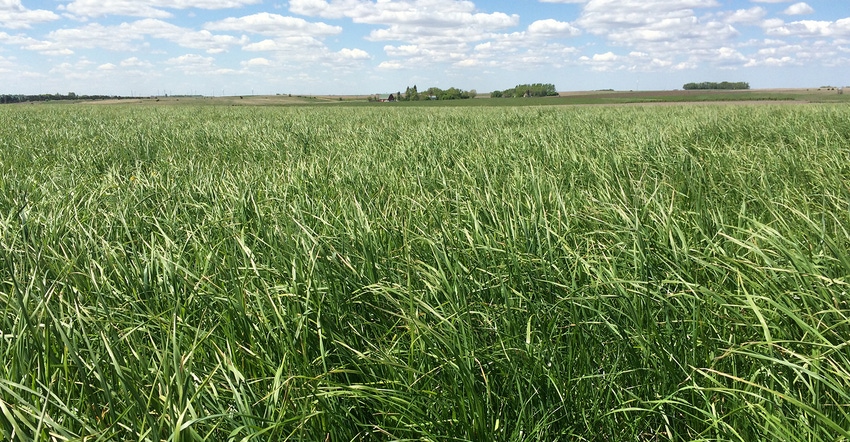February 22, 2019

First-year seeding management is crucial when converting cropland to grass, according to Matt Metzger, Millborn Seeds forage and cover crop specialist, Rapid City, S.D.
With good management and the right weather, it is possible to convert cropland into lush pasture ready for grazing within as little as a year, he says.
Metzger recommends six tips to help:
1. Selecting the right species and varieties for their acres. Using the right seed mix does not guarantee success if management is poor.
2. Drilling in the seed. Seed should be placed shallow, on a firm seedbed. Drilling seed into crop residue maintains and retains moisture and reduces erosion and weed competition.
3. If planting a nurse crop of oats or barley when drilling grass seed, plant a third to half seeding rate of the nurse crop.
4. Checking the stand 60 to 85 days after planting. If the sand is good and the grass is growing well, you can hay it the first year. Haying can provide some income the first year. Haying a healthy stand is also a good weed control measure because it prevents some weeds from going to seed.
5. Avoiding grazing during the seeding year. The only time it is okay to graze a healthy stand is if it is done late fall, once grass is dormant. “This should be a quick pass grazing, like when you’re bringing the herd home for winter,” Metzger explains.
6. If the stand has not received adequate moisture and growth is stunted, then as long as grasses are at the three-leaf stage, spraying for broadleaf weeds and letting the grass grow and go dormant into winter is the best practice. If alfalfa or other forage broadleaves are included in the pasture mix, chemical options are limited, so haying may be the best weed control option.
If seeding a pasture in a drought year, don’t be discouraged. “In a drought year, don’t call it a failed seeding until you have evaluated the following spring,” Metzger says. “The best thing to do during a drought is nothing. More than likely, if the seed was planted into residue, the roots are still alive and will come up the following spring. Patience is key in all pasture seedings, but in dry conditions your patience will be tested even further.”
Grazing the year after planting is a good management practice as long there was sufficient growth during the seeding year. Grazing promotes tillering and roots should be established well enough at this point to support grazing. However, monitor stocking rates closely.
To learn more, contact Millborn Seeds in Rapid City at 605-646-4225 or in Brookings at 605-697-6306.
Source: Millborn Seeds, which is solely responsible for the information provided and is wholly owned by the source. Informa Business Media and all its subsidiaries are not responsible for any of the content contained in this information asset.
You May Also Like




